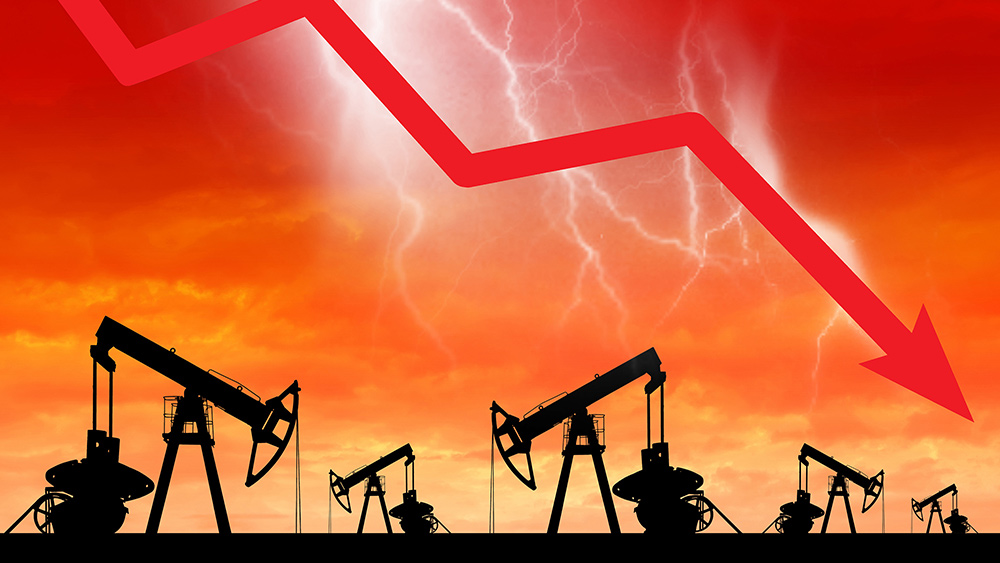Interest rate hikes caused 5.8 increase in Canada’s UNEMPLOYMENT rate, survey reveals
12/14/2023 / By Laura Harris

Interest rate hikes at Canada’s central bank prompted a 5.8 percent increase in the country’s unemployment rate, according to a survey.
Statistics Canada released the results of the November labor force survey on Dec. 1. It found that the jobless rate inched slightly higher to 5.8 percent, a 0.1 percent increase from the 5.7 percent rate recorded in October. According to the Epoch Times, the rate hikes by the Bank of Canada left workers with fewer options in the job market – reflecting in the country’s unemployment rate.
Canada saw a net gain of 38,300 jobs that month, but experienced a net loss of 13,400 jobs – amounting to a total of 13,400 jobs. Most of the gains were in the manufacturing and construction sectors, while the losses came from the following sectors: Wholesale and retail trade, finance, insurance, real estate, rental and leasing. The job gains were primarily driven by an increase in full-time positions while offsetting a decline in part-time jobs.
Additionally, the persistent increase in the unemployment rate since April and the rapid population growth align with Canada’s weak gross domestic product (GDP) numbers. The GDP, which has been struggling since 2022, showed that the economy shrank by 1.1 percent annually in the third quarter of 2023. (Related: US unemployment claims rise to highest level in eight months.)
“If we look at the underlying details, they suggest that the Canadian job creation engine continued to decelerate and lose momentum. That is going to keep rate-cut expectations firm for early next year and contribute to that picture of a slowing Canadian economy overall,” warned Karl Schamotta, chief market strategist at Cambridge Global Payments.
Higher interest rates will no doubt weaken the economy and have reverberating effects on the labor market. In other words, the public must expect a continuous increase in unemployment rates as higher borrowing rates weigh on businesses.
“The increase hasn’t been that large to date, but it is the kind of increase that typically you only see at the start of a labor market downturn,” said Nathan Janzen, assistant chief economist at Royal Bank of Canada (RBC).
Additional jobs fail to keep pace with Canada’s soaring population
Canada surpassed the 15,000 gain forecast in a Reuters poll of analysts when the country added 24,900 jobs in November. But no matter how promising, population growth in the country has been outpacing employment growth.
“While the headline [employment] increase was better than expected, the ongoing increase in the unemployment rate is the bigger story and likely better reflects the state of the economy,” wrote m macroeconomist Benjamin Reitzes, managing director of Canadian rates and macro strategist at BMO Capital Markets.
The monthly employment gain in 2023 averaged 28,000, whereas the monthly population growth averaged a more substantial 80,800 over the same period.
Janzen put in his two cents on the data, saying: “Employment is still rising, but not fast enough anymore to absorb rapid labor force growth. The Bank of Canada looks pretty firmly on hold.”
Learn more about the labor market and the state of the Canadian economy at MarketCrash.news.
Watch this clip from InfoWars as Robert Barnes and George Gammon talk about the true dangers of inflation and the U.S. Federal Reserve’s money-printing practices.
This video is from the InfoWars channel on Brighteon.com.
More related stories:
Unemployment in Germany continues to increase, government data show.
Unemployment now at Great Depression levels, food inflation soaring.
Initial unemployment claims remain high as recession fears affect labor market.
Jobless claims surge to highest level in 6 months as employers cut jobs due to weakening economy.
Sources include:
Submit a correction >>
Tagged Under:
Bank of Canada, big government, Bubble, Canada, Collapse, debt bomb, debt collapse, economic collapse, economy, Inflation, job market, jobless claims, market crash, money supply, risk, unemployment, unemployment crisis, Unemployment Rate
This article may contain statements that reflect the opinion of the author
RECENT NEWS & ARTICLES
COPYRIGHT © 2017 MARKET CRASH NEWS


















